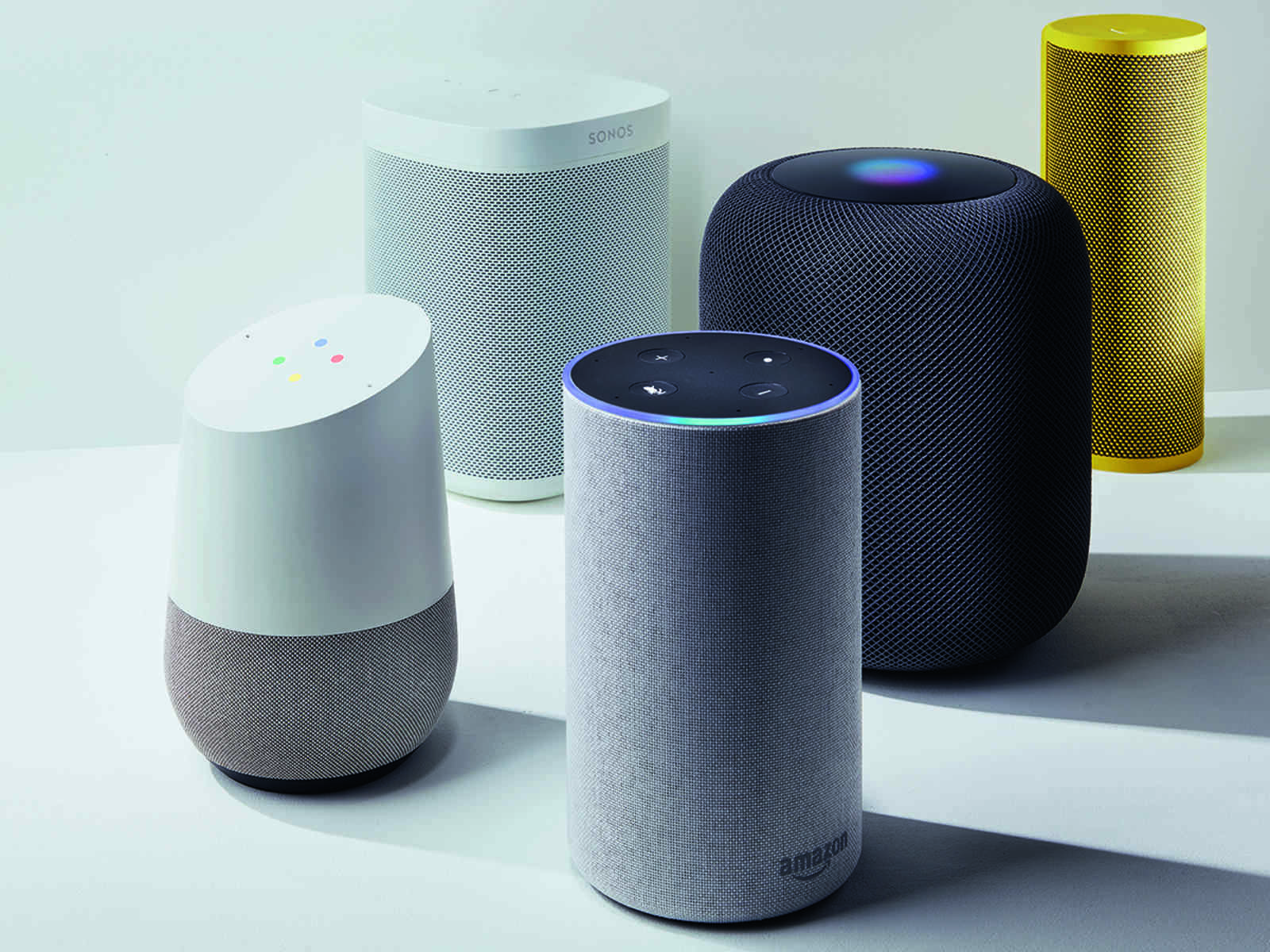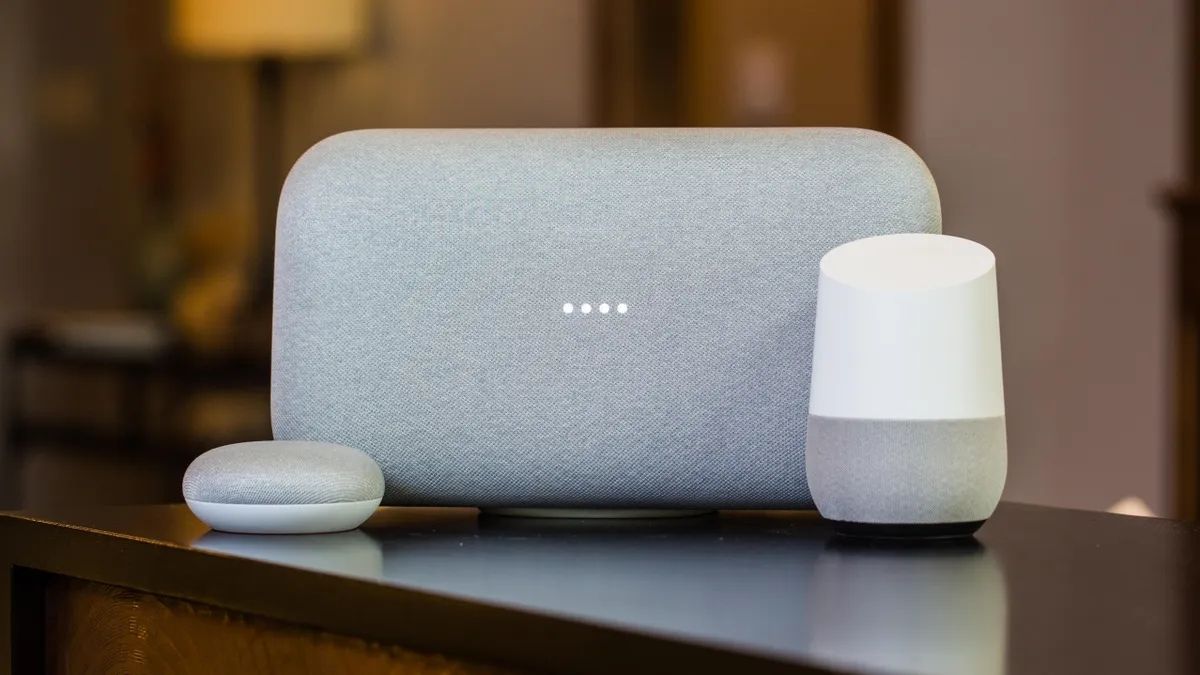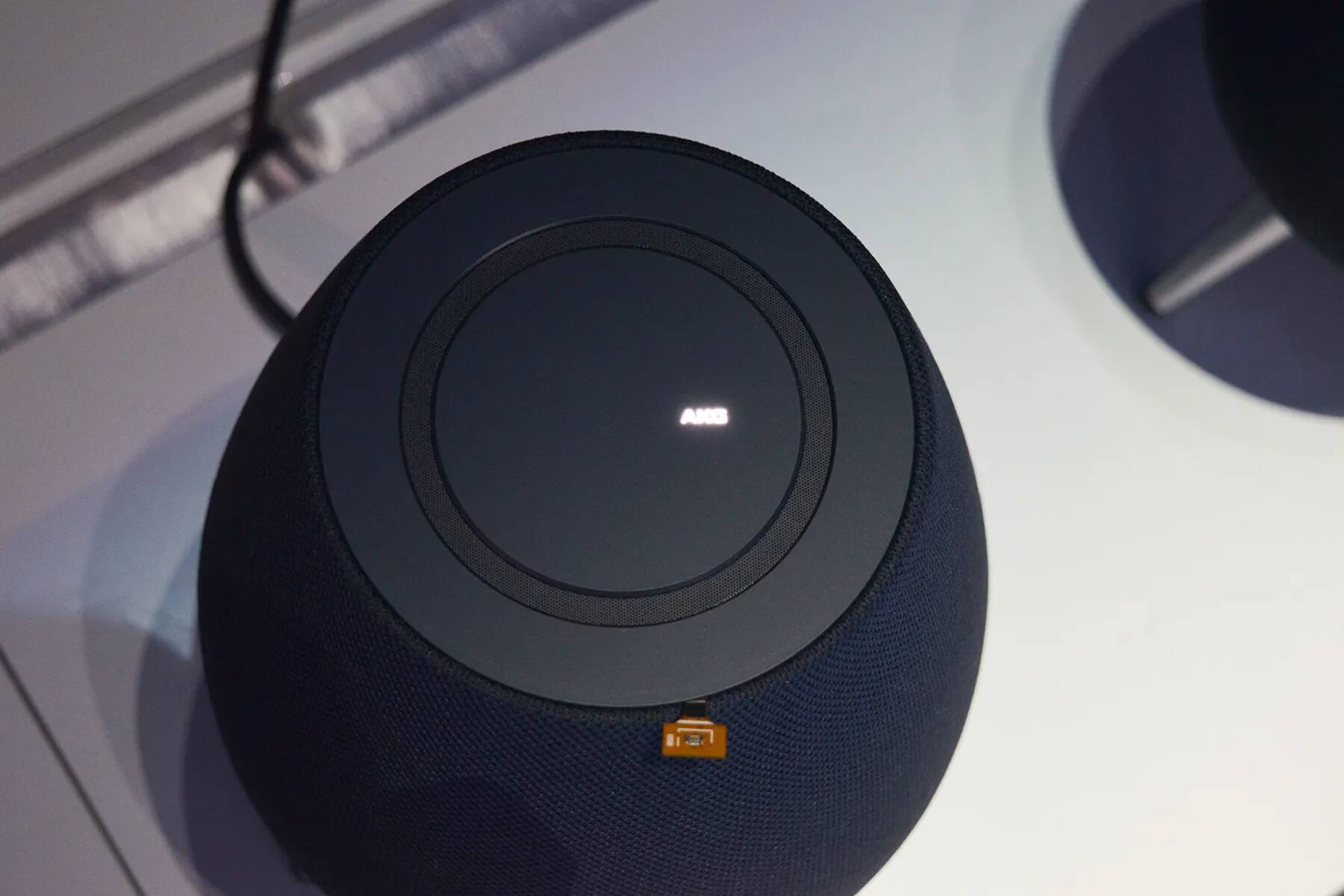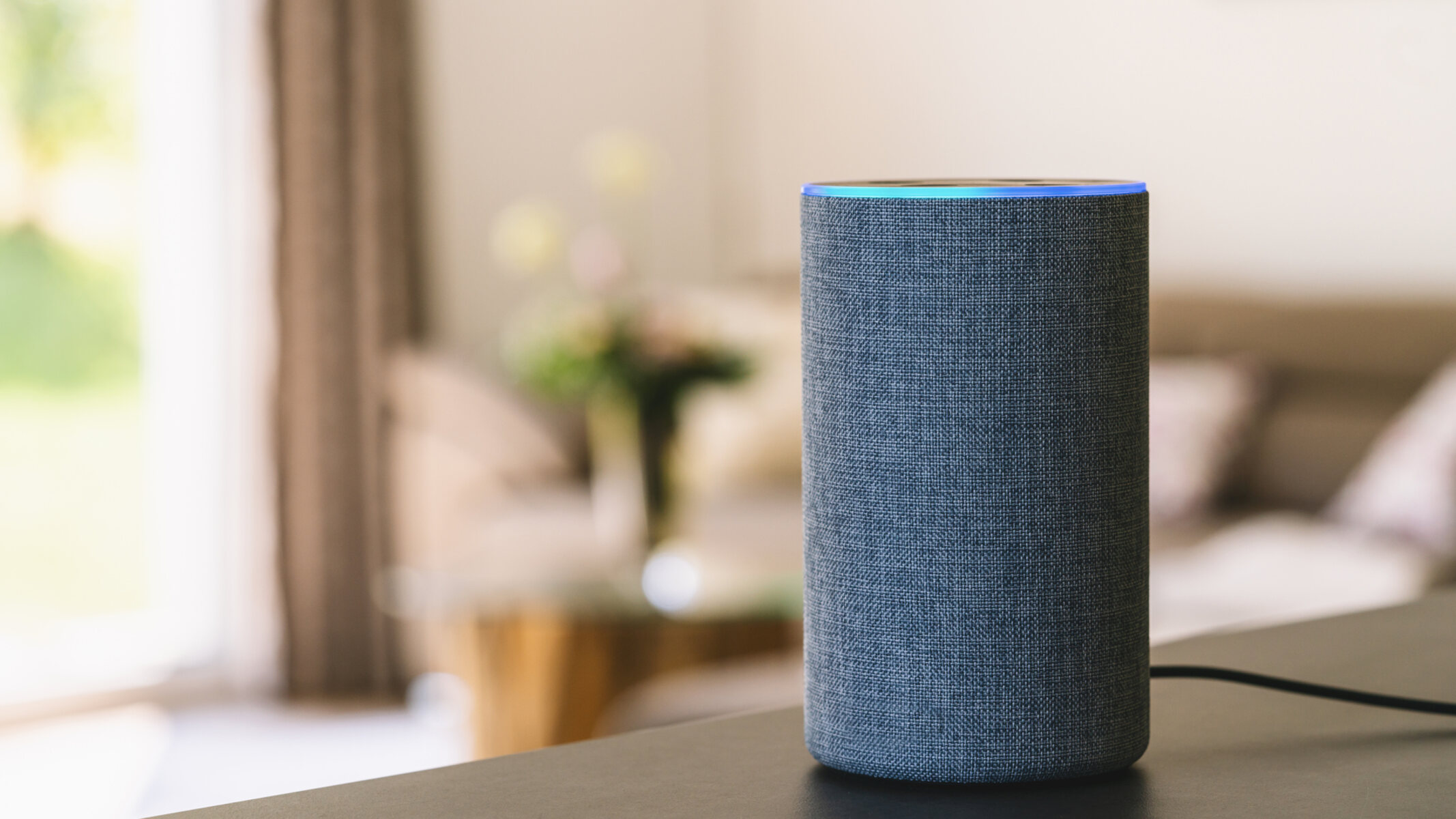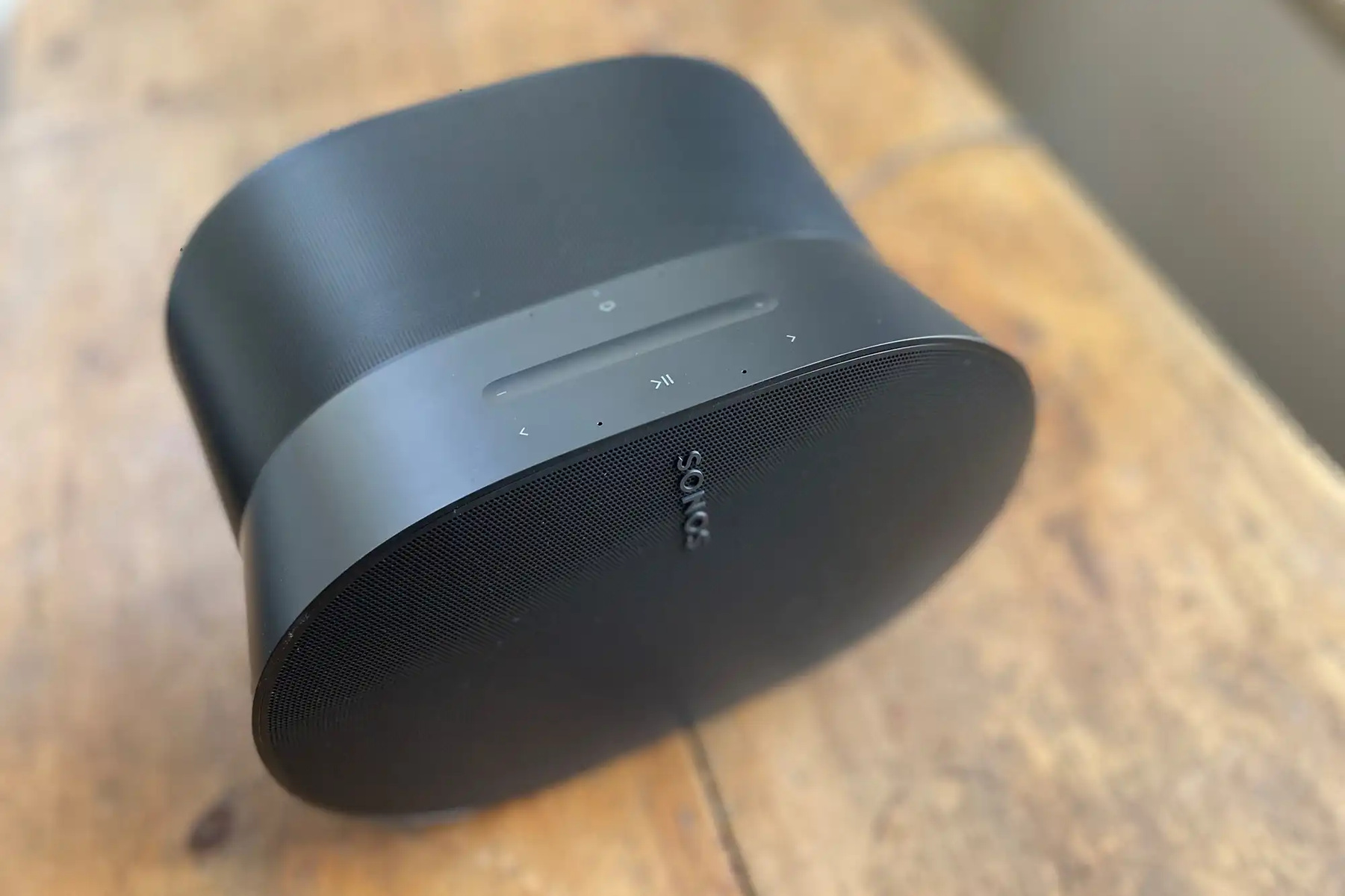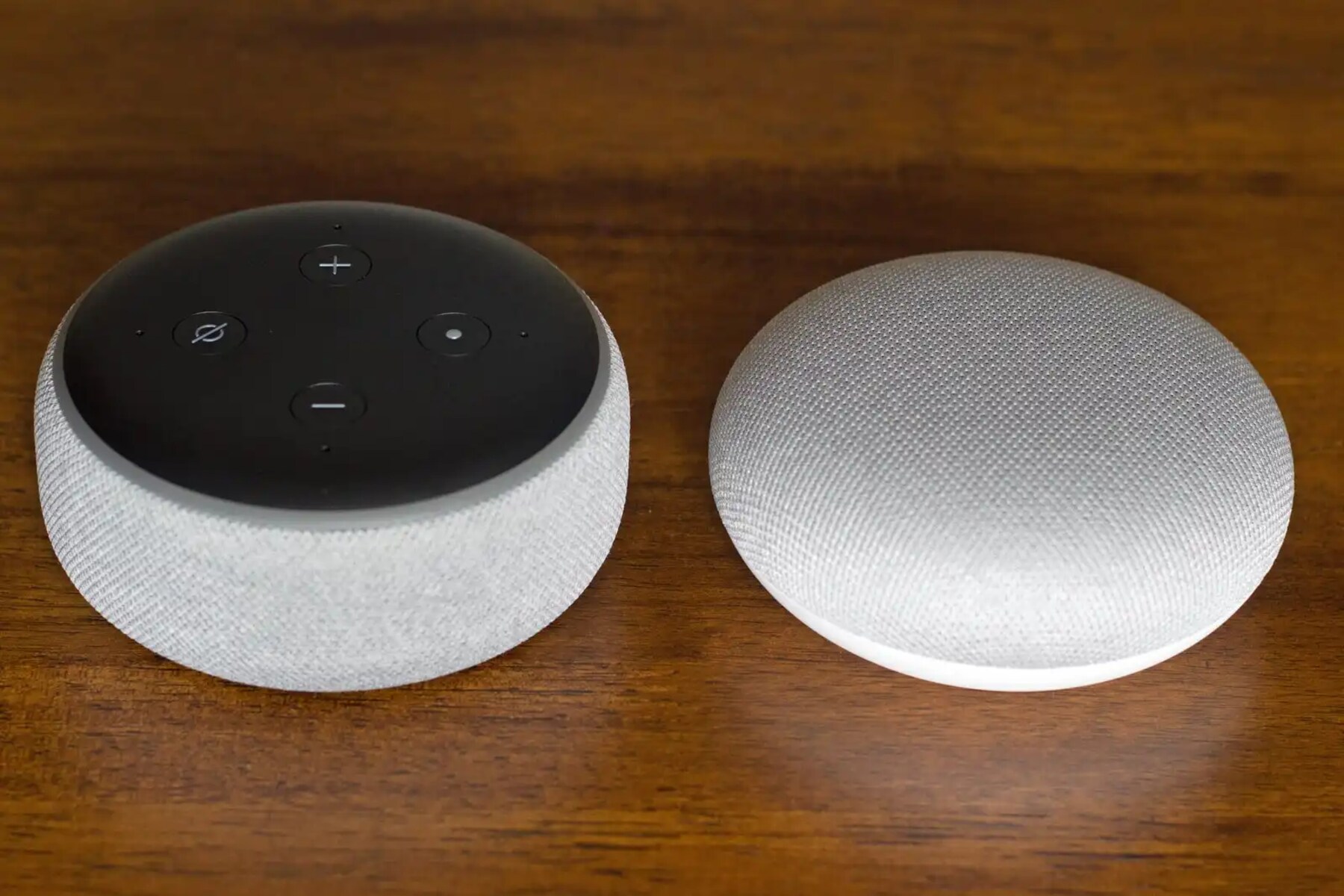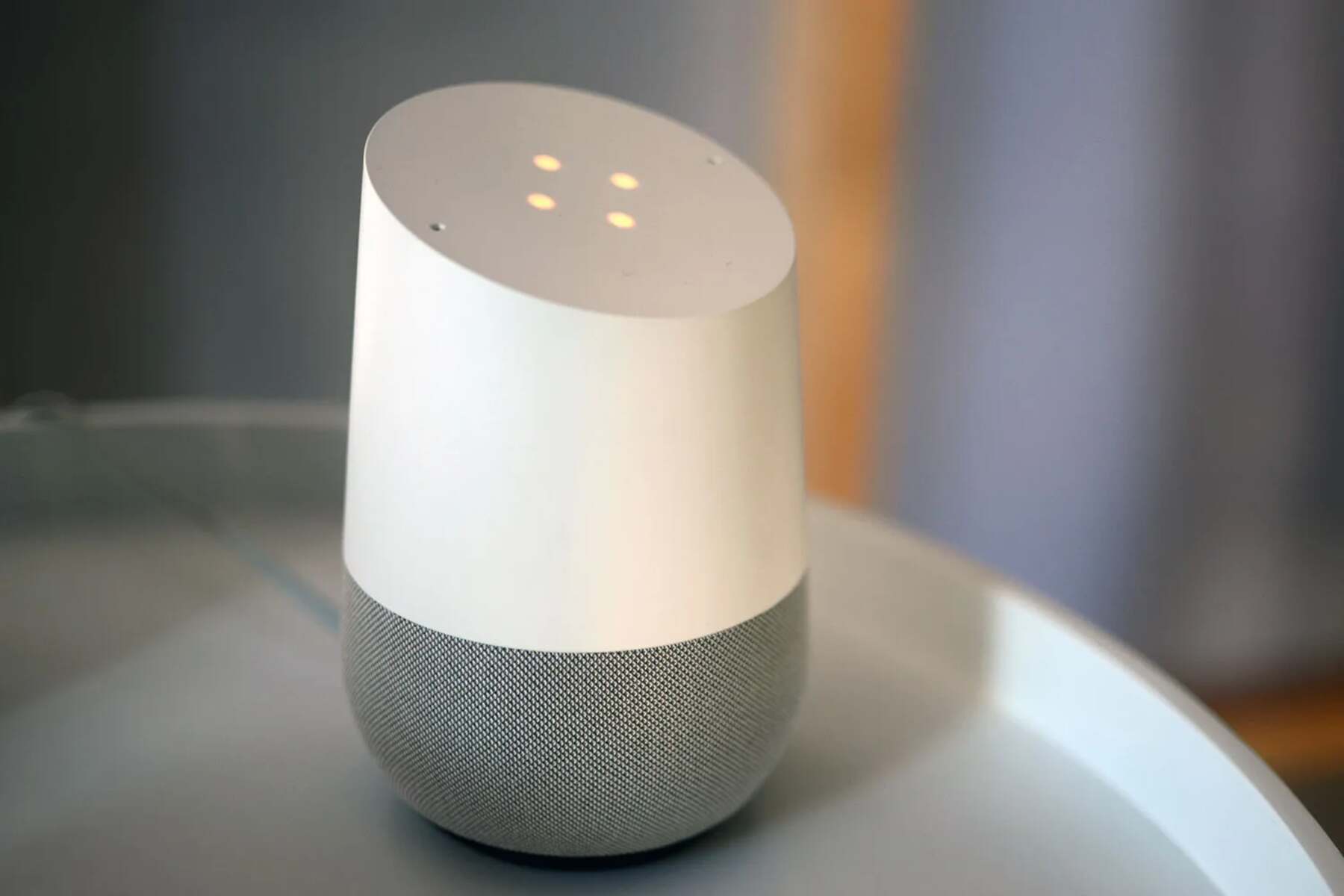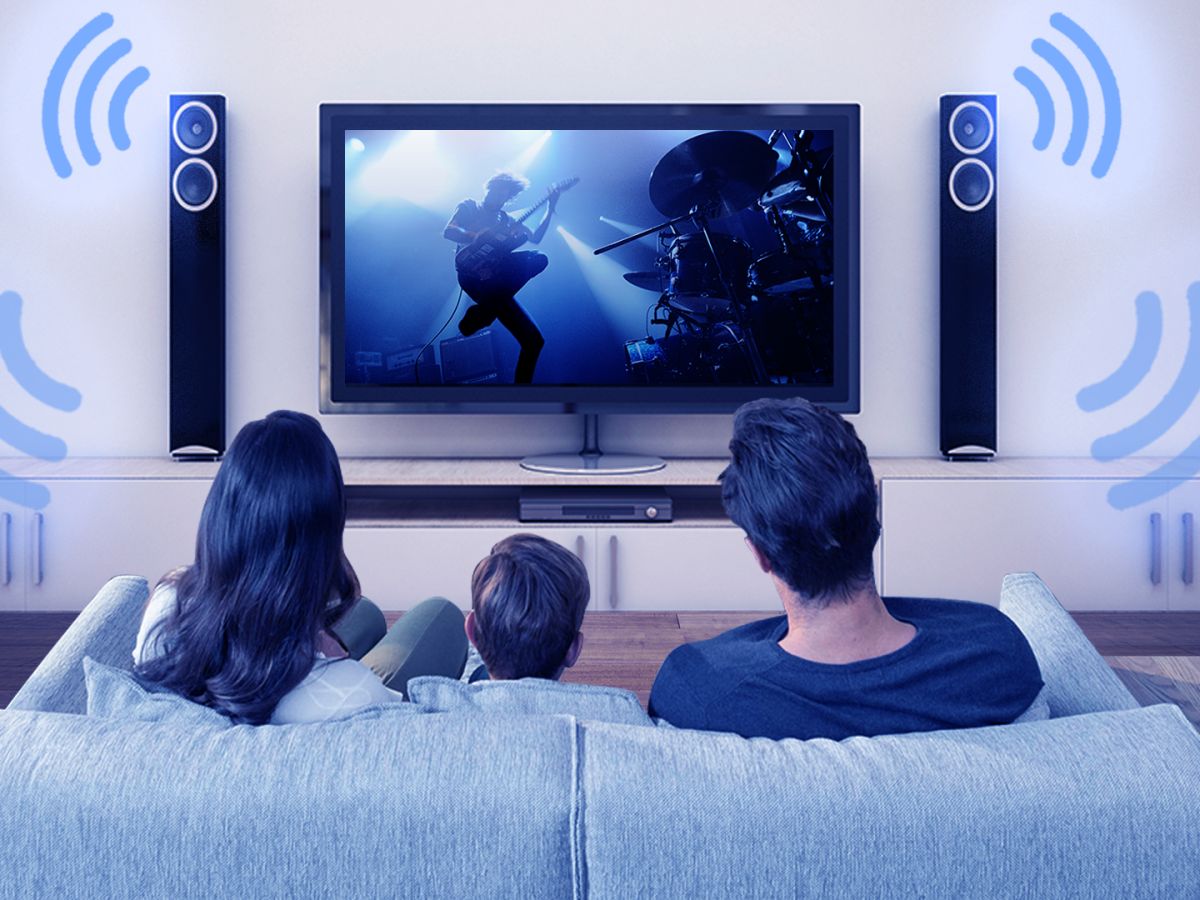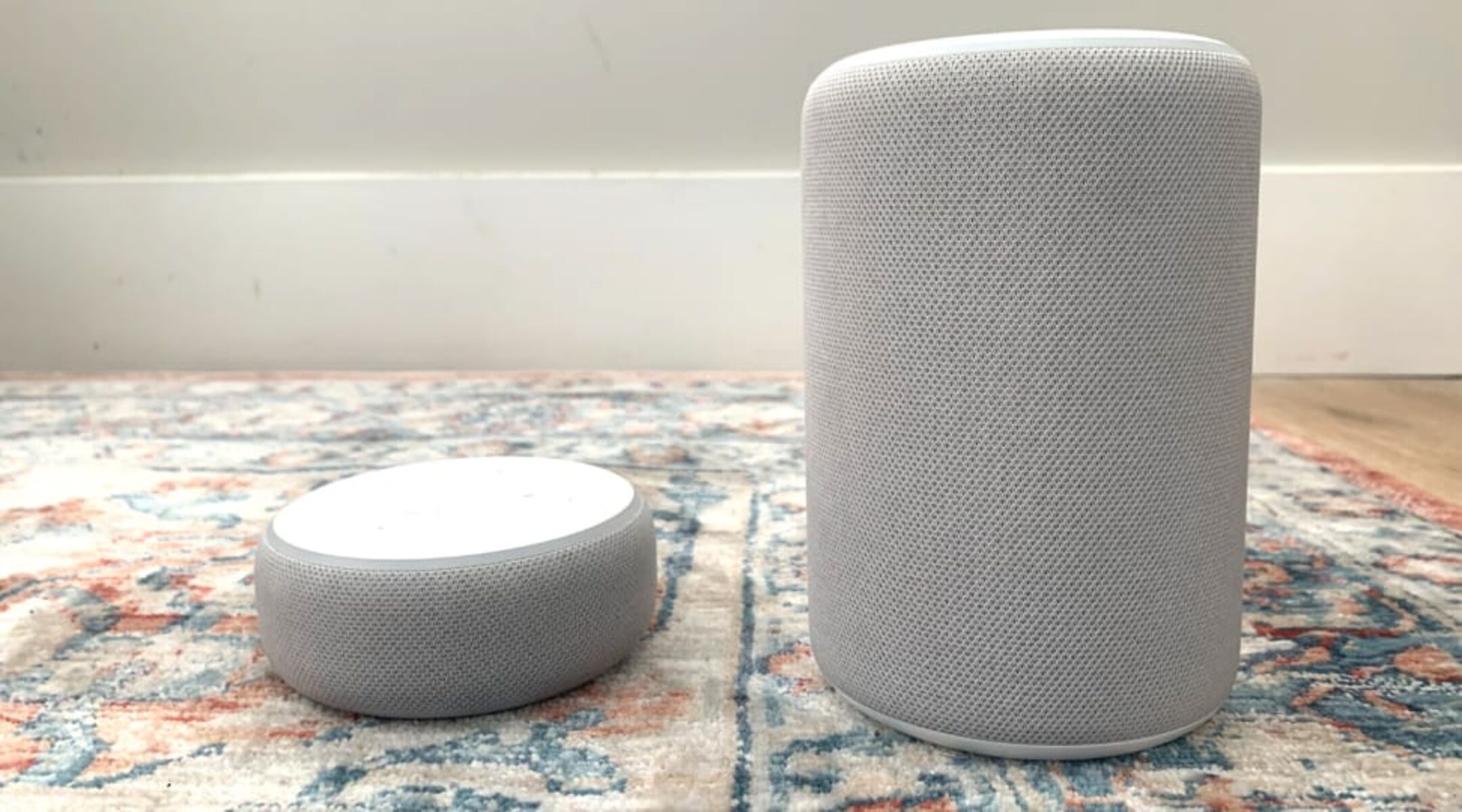Introduction
Smart speaker devices have become increasingly popular in recent years, revolutionizing the way we interact with technology in our homes. These smart devices combine cutting-edge technology with convenience and simplicity, making them a valuable addition to any modern household.
A smart speaker, also known as a voice-activated speaker or virtual assistant speaker, is a connected device that uses voice recognition technology to perform various functions. These devices are typically equipped with virtual assistants such as Amazon Alexa, Google Assistant, or Apple Siri, which can respond to voice commands and carry out a wide range of tasks.
More than just a simple speaker, these devices offer a holistic smart home experience. They can control various connected devices, stream music, answer questions, provide weather updates, set reminders, and much more. With their advanced capabilities and compatibility with other smart devices, smart speakers have become a central hub for controlling and managing various aspects of our homes.
One of the key advantages of using a smart speaker is the hands-free operation it offers. Instead of manually pressing buttons or using a smartphone, users can simply speak commands to the device, making it a convenient and time-saving tool. By enabling voice control, smart speakers provide an intuitive and effortless user experience.
Moreover, smart speakers are designed to integrate seamlessly with other smart devices and services, creating a connected ecosystem within the home. This allows users to control their lights, thermostats, security systems, and more using voice commands through the smart speaker. The ability to automate and control various aspects of a smart home enhances convenience, comfort, and energy efficiency.
In addition, smart speakers offer entertainment features such as music streaming and playback. Users can access their favorite music streaming services and enjoy high-quality audio playback through the speakers. With voice commands, users can request specific songs, create playlists, or even ask for recommendations based on their preferences.
As with any technology, there are privacy and security concerns associated with smart speakers. Since these devices are continuously listening for voice commands, there is a potential risk of sensitive information being recorded and stored. However, smart speaker manufacturers are continuously working to improve data security and offer options for users to control their privacy settings.
Overall, smart speaker devices have revolutionized the way we interact with technology in our homes. With their voice-activated assistants, seamless integration with other devices, and entertainment features, these devices have become an essential part of the modern smart home ecosystem.
Definition and Description
A smart speaker is a voice-activated device that combines the functionalities of a traditional speaker with virtual assistant capabilities. These devices are designed to respond to voice commands and perform various tasks, making them valuable assets in today’s smart homes.
At their core, smart speakers are equipped with integrated virtual assistants such as Amazon Alexa, Google Assistant, or Apple Siri. These virtual assistants use natural language processing technology to understand and interpret user commands. Users can simply speak their requests or questions, and the smart speaker will generate the appropriate response.
Smart speakers are typically connected to the internet and can perform a wide range of functions. They can provide weather updates, answer questions by searching the web, set reminders and alarms, control other smart devices in the home, and even engage in casual conversation. The more advanced models can even facilitate online shopping, make phone calls, and read the latest news articles.
In terms of design, smart speakers come in various shapes and sizes. They can range from compact devices that fit in the palm of your hand to larger, more powerful speakers for enhanced audio quality. Many smart speakers also feature built-in microphones, allowing them to pick up voice commands from a distance.
Furthermore, smart speakers often have multiple connectivity options. They can usually connect to a Wi-Fi network, enabling seamless integration with other smart devices and services in the home. Some smart speakers also support Bluetooth connectivity, allowing users to stream audio from mobile devices or other Bluetooth-enabled devices.
Additionally, smart speakers are equipped with high-quality speakers and audio technology to deliver clear and immersive sound. Some models even offer advanced features like multi-room audio, where users can synchronize multiple speakers to play the same audio throughout different rooms in the house.
As technology continues to evolve, smart speakers are becoming more sophisticated and versatile. Manufacturers are constantly adding new features and capabilities to make these devices even more useful and convenient for users.
Overall, smart speakers have transformed the way we interact with technology and have become an integral part of our daily lives. With their virtual assistant capabilities, seamless connectivity, and audio enhancements, these devices offer a new level of convenience and functionality in the modern home.
Basic Features
Smart speakers come with a range of basic features that make them versatile and user-friendly. While specific features may vary depending on the brand and model, here are some common functionalities you can expect from a smart speaker:
- Voice Control: The primary feature of smart speakers is their voice recognition capabilities. Users can interact with the device by speaking commands or asking questions, eliminating the need for manual input.
- Virtual Assistant Integration: Smart speakers are equipped with virtual assistants like Amazon Alexa, Google Assistant, or Apple Siri. These assistants can perform tasks such as setting reminders, sending messages, providing weather updates, and more.
- Music Streaming and Playback: Most smart speakers function as high-quality speakers and can stream music from popular services like Spotify, Apple Music, or Amazon Music. Users can request specific songs, playlists, or even ask for recommendations based on their preferences.
- Smart Home Control: A key feature of smart speakers is their ability to connect and control other smart devices in the home. Users can use voice commands to turn lights on or off, adjust thermostats, control home security systems, or even operate kitchen appliances.
- Information and Web Search: Smart speakers can provide instant access to information by searching the web or using built-in knowledge databases. Users can ask for the latest news, sports scores, recipes, facts, translation, and more, all without picking up a device.
- Hands-Free Communication: Some smart speakers offer hands-free communication features, allowing users to make phone calls, send messages, or even make video calls using voice commands.
- Personalization: Smart speakers can learn user preferences over time and offer personalized recommendations and suggestions. Whether it’s music recommendations, daily news briefings, or tailored responses, smart speakers can adapt to individual user needs and preferences.
- Calendar and Reminder Management: Smart speakers can sync with users’ calendars, helping them stay organized by reminding them of appointments, meetings, or important events.
These basic features make smart speakers versatile and convenient devices for everyday tasks and entertainment. With a simple voice command, users can access a wide range of information, control their smart home devices, and enjoy their favorite music or podcasts.
Voice Assistant Integration
One of the key features that sets smart speakers apart is their integration with virtual assistants. These virtual assistants, such as Amazon Alexa, Google Assistant, or Apple Siri, serve as the brains behind the device and enable users to interact with the speaker using natural language commands.
Through voice assistant integration, smart speakers can perform a wide range of tasks and functions. Here are some common capabilities offered by voice-activated assistants:
- Task Execution: Voice assistants are capable of executing a variety of tasks based on user commands. Whether it’s setting reminders, sending messages, making calls, or creating to-do lists, users can rely on voice assistants to handle these tasks efficiently.
- Weather Updates and News Briefings: With voice commands, users can obtain instant weather updates specific to their location, as well as receive news briefings based on their preferences. This feature ensures that users stay informed without needing to consult separate devices or applications.
- Web Search and Information Retrieval: Voice assistants can search the web and retrieve information on a wide range of topics. Users can ask questions, get definitions, solve math problems, or even get step-by-step cooking instructions.
- Smart Home Control: Voice assistant integration allows users to control their smart home devices with ease. By simply speaking commands, users can adjust lighting, change the temperature, lock doors, or even start appliances, creating a seamless and convenient home automation experience.
- Calendar and Reminder Management: Voice assistants can sync with users’ calendars and help manage their schedules. Users can add appointments, set reminders, and receive notifications, ensuring they stay organized and on top of their commitments.
- Music and Entertainment: Voice assistants can play music from various streaming services, such as Spotify, Apple Music, or Amazon Music. Users can request specific songs, create playlists, or ask for recommendations based on their preferences.
- Third-Party App Integration: Many voice assistants offer integration with third-party applications, allowing users to perform tasks like ordering food, booking a ride, or controlling other smart devices through compatible apps.
- Language Translation: Voice assistants with multilingual support can provide translation services, making it easier for users to communicate when encountering language barriers.
Voice assistant integration not only enhances the capabilities of smart speakers but also provides a seamless and intuitive user experience. By conversing with the device, users can accomplish various tasks and access information without needing to touch a screen or navigate through menus. The continuous development and improvement of voice assistants contribute to the ongoing innovation and advancement of smart speaker technology.
Music Streaming and Playback
One of the standout features of smart speakers is their ability to stream and play music. With their built-in high-quality speakers and integration with popular music streaming services, these devices offer a seamless and convenient music listening experience.
Here are some key aspects of music streaming and playback on smart speakers:
- Access to Music Libraries: Smart speakers provide instant access to a vast library of music. Users can stream millions of songs from popular music streaming platforms such as Spotify, Apple Music, Amazon Music, and more.
- Voice Command Music Control: With voice commands, users can request specific songs, albums, artists, or genres. They can even ask for playlists based on their mood or activity, making it effortless to find the perfect music for any occasion.
- Personalized Recommendations: Smart speakers can learn the user’s music preferences over time and offer personalized recommendations. Based on listening history and behavior, the device can suggest new artists, songs, or playlists that align with the user’s taste.
- Multi-Room Audio: Some smart speakers support multi-room audio, allowing users to synchronize multiple speakers throughout their home. This enables a seamless music listening experience as the same audio can be played simultaneously in different rooms.
- Music Control via Smartphone: Users can also control the music playback on their smart speaker using their smartphones. They can adjust the volume, skip or pause tracks, create playlists, or even queue up songs from their smartphones using compatible apps.
- Audio Quality: Smart speakers are engineered to deliver high-quality audio performance. With advanced audio technologies and built-in speakers, they can produce clear and immersive sound, enhancing the overall listening experience.
- Integration with Streaming Services: Smart speakers seamlessly integrate with popular music streaming services. This allows users to connect their existing accounts, access their personal libraries and playlists, and enjoy a personalized music experience.
- Music across Different Devices: Smart speakers can play music across multiple devices within the same ecosystem. For example, users can start playing music on their smart speaker and continue listening on their smartphones or other compatible devices without interruption.
Whether users want to relax to their favorite tunes, discover new music, or create personalized playlists, smart speakers provide a convenient and enjoyable way to enjoy music throughout the home. The integration with popular music streaming services and the ability to control the playback using voice commands make smart speakers a perfect companion for music enthusiasts.
Home Automation and Smart Home Integration
Smart speakers play a pivotal role in home automation and smart home integration, serving as a central control hub for various connected devices. By utilizing voice commands and virtual assistant integration, these devices offer seamless control over a wide range of smart home technologies and create a more convenient and efficient living environment.
Here are some key aspects of home automation and smart home integration with smart speakers:
- Voice-Activated Control: With voice commands, users can control and manage various smart home devices, including lights, thermostats, locks, cameras, and more. This hands-free control feature enhances convenience and eliminates the need for manual operation.
- Integration with Smart Home Ecosystems: Smart speakers are designed to seamlessly integrate with other smart home devices. Through compatibility with popular smart home ecosystems like Amazon Alexa, Google Assistant, or Apple HomeKit, users can create a unified system to control and monitor their smart home devices from a single interface.
- Scene and Routine Creation: Smart speakers allow users to create scenes or routines that automate multiple actions simultaneously. For example, with a single voice command, users can activate a “movie night” scene that dims the lights, closes the curtains, and turns on the TV and sound system, creating a customized and immersive home entertainment experience.
- Remote Access and Control: With smart speakers, users can remotely control their smart home devices from anywhere using a companion smartphone app. This ensures that users have full control over their home, even when they are away.
- Voice-Activated Energy Management: Smart speakers enable users to control energy consumption through smart home devices. Users can adjust thermostats, turn off lights, or manage other energy-consuming devices using voice commands, promoting energy efficiency and reducing utility costs.
- Smart Home Security Integration: Smart speakers can integrate with security systems, allowing users to arm or disarm their home security system, lock doors, or view security camera feeds using voice commands. This enhances home security and provides peace of mind.
- Compatibility with Third-Party Devices: Smart speakers often support integration with a variety of third-party devices and services, expanding their compatibility and functionality. Users can connect their smart speakers with devices like smart plugs, smart switches, or even robotic vacuums to enhance their smart home experience.
- Voice-Controlled Cooking and Kitchen Automation: Certain smart speakers are equipped with built-in culinary capabilities, including recipe suggestions, hands-free timers, and measurement conversions. These features simplify cooking and enhance efficiency in the kitchen.
Smart speakers have become an essential part of the modern smart home ecosystem. By seamlessly integrating with various smart devices and offering voice-activated control, these devices enable users to create a personalized and efficient living environment. Whether it’s managing energy consumption, enhancing security, or automating daily routines, smart speakers bring convenience and functionality to the forefront of home automation.
Connectivity and Compatibility
Smart speakers offer versatile connectivity options that enable seamless integration with other devices and services, making them a central communication and control hub within the home. These devices are designed to be compatible with a wide range of smart home devices and offer various connectivity features to enhance convenience and functionality.
Here are some key aspects of connectivity and compatibility with smart speakers:
- Wi-Fi Connectivity: Smart speakers connect to the internet via Wi-Fi, allowing them to access online content, receive software updates, and communicate with other devices and services in real-time.
- Bluetooth Connectivity: Many smart speakers also support Bluetooth connectivity, enabling users to stream audio wirelessly from their smartphones, tablets, or other Bluetooth-enabled devices.
- Smart Home Device Integration: Smart speakers are designed to be compatible with a wide range of smart home devices, including lights, thermostats, locks, cameras, and more. This enables users to control and monitor their entire smart home ecosystem using a single voice command or interface.
- Compatibility with Virtual Assistants: Smart speakers are built with virtual assistant integration, such as Amazon Alexa, Google Assistant, or Apple Siri. These assistants provide a unified interface and voice recognition capabilities across multiple devices and allow users to utilize the same virtual assistant on their smartphones, tablets, or smart speakers.
- Multi-Room Audio Synchronization: With the connectivity features offered by smart speakers, users can synchronize multiple speakers throughout their home to create a multi-room audio system. This allows them to enjoy the same audio experience in different areas of the house.
- Smartphone Companion Apps: Smart speaker manufacturers often provide companion smartphone apps that allow users to control and manage their devices remotely. These apps provide additional features and customization options, enhancing the overall smart home experience.
- Home Network Security: Smart speakers connect to the home network, raising concerns about data security. Manufacturers prioritize security measures to protect user privacy, including encryption, password protection, and regular software updates.
- Integration with Music Streaming Services: Smart speakers integrate with popular music streaming services such as Spotify, Apple Music, or Amazon Music. This allows users to access their music libraries, playlists, and personalized recommendations directly through the smart speaker.
- Compatibility with Smart TV and Entertainment Systems: Some smart speakers have integration capabilities with smart TVs or entertainment systems. This allows users to control their television, change channels, adjust volume, or launch streaming services using voice commands.
The connectivity and compatibility features of smart speakers enable users to create a seamlessly interconnected smart home ecosystem. With the ability to control various devices, access online content, stream music, and communicate with virtual assistants, smart speakers provide a convenient and unified experience for managing and enjoying technology in the home.
Privacy and Security Concerns
While smart speakers offer numerous benefits and convenience, they also raise concerns regarding privacy and security. As these devices constantly listen and respond to voice commands, there is understandable apprehension about the potential risks associated with privacy breaches and data security. Here are some key privacy and security concerns associated with smart speakers:
- Always-On Listening: Smart speakers are designed to be “always-on” and continuously listen for wake words to activate. This feature raises concerns about unintentional recordings, as users may worry that their private conversations might be inadvertently captured by the device.
- Data Collection and Storage: Smart speakers transmit voice recordings to the cloud for processing by virtual assistants. This data is stored to improve voice recognition and personalize user experiences. However, the storage and use of this data may raise privacy concerns, particularly if it is accessed by unauthorized individuals or organizations.
- Third-Party Data Sharing: Smart speakers may share user data with third-party service providers, such as music streaming platforms or advertisers. Users may have concerns about how their personal information is shared and utilized by these external entities.
- Security Vulnerabilities: As with any connected device, smart speakers can be vulnerable to hacking or security breaches. Unauthorized access to a smart speaker could potentially lead to data theft, unauthorized control of devices, or even eavesdropping on conversations within the home.
- False Activations: Smart speakers may sometimes mistakenly activate based on misinterpreted background noise or similar-sounding phrases. This can potentially lead to unintended recordings and pose privacy concerns.
- Child Privacy and Safety: Consideration must be given to child privacy and safety concerns. Smart speakers must be set up and managed in a way that ensures children’s personal information and interactions are protected.
- Privacy Control Options: Recognizing these concerns, smart speaker manufacturers have implemented privacy control features. These may include physical mute buttons, customizable privacy settings, or options to delete voice recordings manually or automatically after a certain period of time.
- Updated Privacy Policies: Manufacturers have also improved transparency by updating privacy policies to clarify data collection, storage, and usage practices. This allows users to make informed decisions about their privacy settings and levels of comfort with the device’s capabilities.
While privacy and security concerns exist, it is essential to note that smart speaker manufacturers are continuously working to address these issues. They are investing in encryption technologies, improving security protocols, and providing users with more control over their data. It is crucial for users to familiarize themselves with privacy settings and stay updated on firmware updates and security measures to ensure a safer and more privacy-focused experience with smart speakers.
Popular Smart Speaker Devices
The market for smart speaker devices has grown rapidly, with several major players offering their own unique devices and features. Here are some of the most popular smart speaker devices available today:
- Amazon Echo: Amazon Echo, powered by the virtual assistant Alexa, is one of the pioneers in the smart speaker market. It offers a range of models, from the compact Echo Dot to the premium Echo Studio, catering to different user preferences and budgets.
- Google Nest: Google Nest speakers, powered by Google Assistant, provide a seamless integration with Google’s ecosystem and offer voice control for a range of tasks. They come in various models, including the Nest Mini and Nest Hub Max, with features like touchscreens and built-in cameras.
- Apple HomePod: Apple HomePod, equipped with Siri, delivers a high-quality audio experience integrated with Apple’s ecosystem. It boasts impressive sound quality and supports features like multi-room audio and smart home device control.
- Sonos One: Sonos One is a versatile smart speaker that supports multiple voice assistants, including Amazon Alexa and Google Assistant. It offers excellent audio quality and can be easily integrated into existing Sonos speaker setups.
- JBL Link: JBL Link is a range of smart speakers powered by Google Assistant. These speakers offer a combination of great sound and smart features, including hands-free voice control and compatibility with other JBL Connect-enabled speakers for multi-room audio.
- Bose Home Speaker: Bose Home Speaker devices provide impressive audio quality and integration with both Amazon Alexa and Google Assistant. They offer features such as touch-sensitive controls and compatibility with other Bose speakers for synchronized audio playback.
- Samsung Galaxy Home: Samsung Galaxy Home is a premium smart speaker device powered by Samsung’s virtual assistant, Bixby. It offers a modern design, impressive sound quality, and seamless integration with other Samsung devices, making it a popular choice among Samsung users.
These are just a few examples of the many smart speaker devices available on the market. Each device has its own unique features, design aesthetics, and compatibility options. Users can select a smart speaker based on their preferred virtual assistant, desired audio quality, budget, and integration requirements with other smart home devices.
It’s important to note that the popularity of smart speaker devices can vary depending on geographic location and user preferences. Keeping up with the latest trends and user reviews can help in selecting the right smart speaker that best suits individual needs and preferences.
Conclusion
Smart speaker devices have revolutionized the way we interact with technology in our homes, offering convenience, versatility, and seamless integration. These devices, powered by voice-activated virtual assistants, provide a wide range of functionalities, from answering questions and controlling smart home devices to streaming music and providing personalized recommendations.
With their voice recognition capabilities and intuitive user interfaces, smart speakers have become central hubs for managing daily tasks and accessing information. They offer hands-free control, allowing users to simply speak their commands and receive instant responses or perform actions without the need for manual input.
Smart speakers have also greatly enhanced home automation and smart home integration. By connecting and controlling various devices through their virtual assistants, users can create a seamless and convenient living environment. Whether it’s adjusting lights, controlling thermostats, or managing security systems, smart speakers simplify and streamline home automation processes.
In terms of connectivity and compatibility, smart speakers offer Wi-Fi and Bluetooth connectivity, allowing users to access online content, stream music, and connect with other devices. They seamlessly integrate with popular smart home ecosystems and support multiple voice assistants, providing a unified experience across different devices and services.
However, it is important to consider the privacy and security concerns that come along with smart speakers. Always-on listening, data collection, and potential security vulnerabilities can raise valid privacy concerns for users. Manufacturers are actively working on implementing privacy control options and security measures to mitigate these risks and protect user data.
In conclusion, smart speaker devices have become essential gadgets in modern homes, enhancing convenience, efficiency, and entertainment. With their voice assistant integration, music streaming capabilities, home automation features, and connectivity options, smart speakers truly bring the concept of a smart home to life. As technology continues to advance, smart speakers will undoubtedly evolve, offering even more functionalities and further enriching our daily lives.







